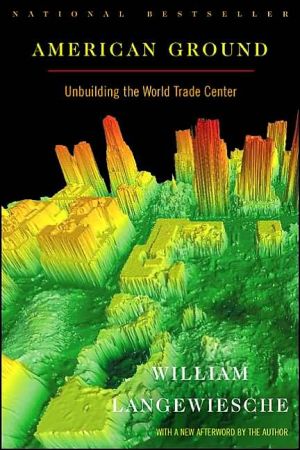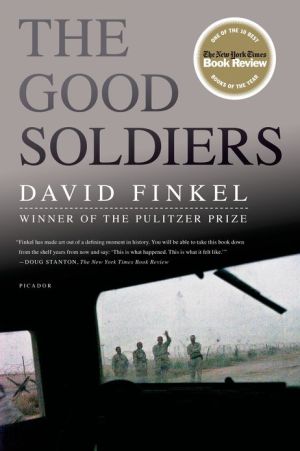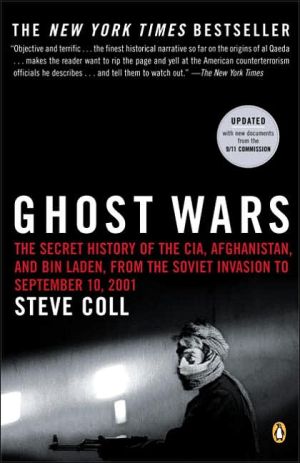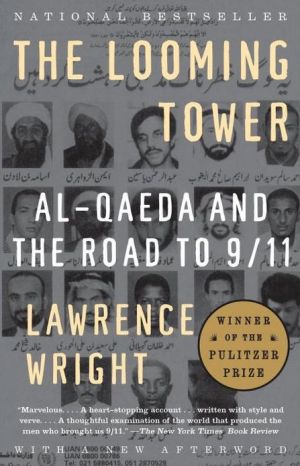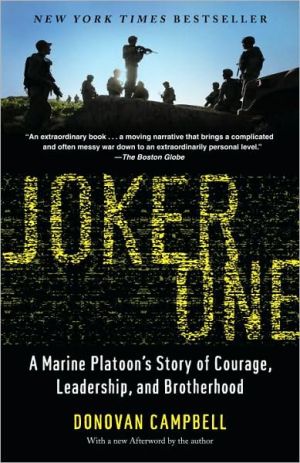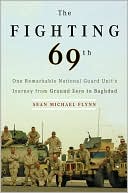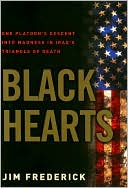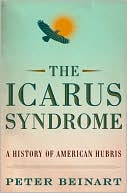American Ground: Unbuilding the World Trade Center
Selected as one of the best books of 2002 by The New York Times, San Francisco Chronicle, Boston Globe, Los Angeles Times, and Chicago Sun-Times\ Within days after September 11, 2001, William Langewiesche had secured unique, unrestricted, round-the-clock access to the World Trade Center site. American Ground is a tour of this intense, ephemeral world and those who improvised the recovery effort day by day, and in the process reinvented themselves, discovering unknown strengths and weaknesses....
Search in google:
Selected as one of the best books of 2002 by The New York Times, San Francisco Chronicle, Boston Globe, Los Angeles Times, and Chicago Sun-TimesWithin days after September 11, 2001, William Langewiesche had secured unique, unrestricted, round-the-clock access to the World Trade Center site. American Ground is a tour of this intense, ephemeral world and those who improvised the recovery effort day by day, and in the process reinvented themselves, discovering unknown strengths and weaknesses. In all of its aspects—emotionalism, impulsiveness, opportunism, territoriality, resourcefulness, and fundamental, cacophonous democracy—Langewiesche reveals the unbuilding to be uniquely American and oddly inspiring, a portrait of resilience and ingenuity in the face of disaster. Publishers Weekly Langewiesche had unrestricted access to Manhattan's Ground Zero during the post-September 11 cleanup, and his triptych of articles (originally published in the Atlantic Monthly) takes readers through what became known to its denizens as the Pile, from the moment of destruction to the departure of the last truckload of rubble from the ruins a little less than nine months later. He gives a calm, precise account of the air traffic controllers trying to understand what was happening to the hijacked planes and explains precisely how the towers collapsed. The stars of the rest of this story are people one doesn't usually read about: administrators, engineers and construction workers in charge of the cleanup-a process in which, as Langewiesche describes it, order emerged from chaos by the sheer force of will of those in charge. One such outsize personality is David Griffin, a demolition expert who drove up from North Carolina, bluffed his way onto the restricted site, and quickly wound up in a position of authority. There's also a frank account of the tensions between police and firefighters at Ground Zero. Most fascinating, though, Langewiesche takes readers right inside the smoking Pile, as he joins workers on dangerous underground expeditions to see whether the slurry walls that keep out the Hudson will hold, or whether freon might be leaking from underground refrigerators. This is a genuinely monumental story, told without melodrama, an intimate depiction of ordinary Americans reacting to grand-scale tragedy at their best-and sometimes their worst. Copyright 2002 Cahners Business Information.
AMERICAN GROUND\ Unbuilding the World Trade Center \ \ By WILLIAM LANGEWIESCHE \ NORTH POINT PRESS\ Copyright © 2002 William Langewiesche\ All right reserved.\ ISBN: 0865475822\ \ \ \ Chapter One\ When the Twin Towers collapsed, on the warm, bright morning of September 11, 2001, they made a sound heard variously around New York as a roar, a growl, or distant thunder. The South Tower was the first to go. At 9:59 its upper floors tilted briefly before dropping, disintegrating, and driving the building straight down to the ground. The fall lasted ten seconds, as did the sound. Many people died, but mercifully fast. Twenty-nine minutes later the North Tower collapsed just as quickly, and with much the same result. Somehow a few people survived. For an instant, each tower left its imprint in the air, a phantom of pulverized concrete marking a place that then became a memory. Prefabricated sections of the external steel columns tumbled down onto lesser buildings, piling onto terraces and rooftops, punching through parking structures, offices, and stores, inducing secondary collapses and igniting fires. The most catastrophic effects were eerily selective: with the exception of Saint Nicholas, a tiny Greek Orthodox church that dissolved in the rain of steel, the only buildings completely wrecked were those that carried the World Trade Center label. There were seven in all, and ultimately none of themendured. Not even the so-called World Trade Center Seven, a relatively new forty-seven-floor tower that stood independently across the street from the complex, was able to escape the fate associated with its name. Though it did not seem seriously wounded at first, it burned persistently throughout the day, and that evening became the first steel-frame high-rise in history to fall solely because of fire.\ There was wider damage, of course, and on the scale of ordinary disasters it was heavy. For thirty years the Twin Towers had stood above the streets as all tall buildings do, as a bomb of sorts, a repository for the prodigious energy originally required to raise so much weight so high. Now, in a single morning, in twin ten-second pulses, the towers released that energy back into the city. Massive steel beams flew through the neighborhood like gargantuan spears, penetrating subway lines and underground passages to depths of thirty feet, crushing them, rupturing water mains and gas lines, and stabbing high into the sides of nearby office towers, where they lodged. The phone system, the fiber-optic network, and the electric power grid were knocked out. Ambulances, cars, and fire trucks were smashed flat by falling debris, and some were hammered five floors down from the street into the insane turmoil erupting inside the World Trade Center's immense "bathtub"-a ten-acre foundation hole, seventy feet deep, that was suffering unimaginable violence as it absorbed the brunt of each tower's collapse.\ The energy released within that wild, inaccessible core lit fires that cooked the ruins for months afterward. Outside of each tower's footprint, and still within the foundation hole, it demolished most of the six-story subterranean structure-consisting largely of parking garages that were either pulverized or badly broken and left to hang. Deep underground it also destroyed part of the Port Authority Trans-Hudson (PATH) commuter line-a railroad from New Jersey that, having passed in a single-track tube through the watery muck of the river's bottom, emerged into the foundation hole and traveled to a station on the far side before looping back to a parallel tube and returning under the river to New Jersey. The PATH tubes were century-old cast-iron structures, probably brittle in places, and now at immediate risk of failure, if either of them broke catastrophically, the Hudson River would flood into the foundation hole, filling it at high tide to a level just five feet below the street and drowning unknown numbers of trapped survivors. Moreover, on the far side of the river a wall of water would flood the Jersey City station, and from there, via connecting rail links, would circle uncontrollably back into Manhattan, rush through the passages beneath Greenwich Village, and take out the West Side subways from the southern tip of the island nearly to Central Park. Vulnerability to sequential flooding was a known weakness of the PATH system, and it had been highlighted in a report circulated discreetly among government officials after the earlier World Trade Center attack, the parking-garage bombing of February 26, 1993. But maybe because such flooding was also something of an apocalyptic vision-and therefore somehow unreal-no defenses were erected against it. Of course now it was too late. And immediately as the Twin Towers collapsed, it became obvious that even in America apocalypses could come to pass.\ On the surface the scene was just as rough. At the southwest corner of the World Trade Center complex the twenty-two-floor Marriott hotel was transformed into a raw, boxy thing three stories high. Just to the north, across West Street, a pedestrian bridge gave way, killing groups of firemen and office workers who had sheltered beneath it. The streets budded under heaps of smoking steel. So much heavy debris fell across the access routes that rescue vehicles were rendered useless. Major fires ignited in all directions. Simultaneously, air-pressure waves shifted small cars and shattered windows for several blocks around, blowing powdery World Trade Center remains into apartments and across the chest-high partitions of corporate offices. The powder was made primarily of crushed concrete. The waves generated winds that pushed it through the streets in dense, choking clouds and lifted it to mix with smoke and darken the morning. Then all the white paperwork floated down on the city as if in mockery of the dead.\ The suddenness of the transformation was difficult to accept. It had taken merely one brief morning, merely twenty seconds of collapse, and now all that remained standing of the Twin Towers were a few skeletal fragments of the lower walls, the vaguely gothic structures that reached like supplicating hands toward the sky. After the dust storms settled, people on the streets of Lower Manhattan were calm. They walked instead of running, talked without shouting, and tried to regain their sense of place and time. Hiroshima is said to have been similar in that detail. The site itself remained frightening because of the confusion of ruins and fire, as well as the possibility of further attacks or collapses. But a reversal soon occurred by which people began moving toward the disaster rather than away from it. The reaction was largely spontaneous, and it cut across the city's class lines as New Yorkers of all backgrounds tried to respond. A surprising number of stockbrokers, shopkeepers, artists, and others got involved. For the most part, however, it was the workers with hardhats, union cards, and claims to a manual trade who were able to get past the police checkpoints that had been established earlier that morning, after the first airplane struck. Few of these workers lived in Manhattan, though typically they were there that morning on jobs. They hailed from Staten Island, Brooklyn, the Bronx, Queens, and the close-in suburbs of Long Island and New Jersey, and most had accents to prove it. From the start, therefore, the recovery site was what it remained: an outer-borough New York blue-collar scene-overwhelmingly Irish, Italian, and male, terribly unrepresentative by social measures, and yet authentic.\ Arriving at the site over the first few hours, the volunteers joined with the firefighters and the police, who by then were shaking off their disbelief and struggling to take effective action. By afternoon thousands of people in these combined forces were searching through the ruins for survivors, attacking the debris by hand, forming bucket brigades, and climbing over the smoking pile that in some places rose fifty feet above the street. At 5:20 P.M. World Trade Center Seven collapsed tidily in place, damaging some adjacent buildings but killing no one. By dark the first clattering generators lit the scene, and an all-American outpouring of equipment and supplies began to arrive. The light stuff got there first: soda pop and bottled water, sandwiches, flashlights, bandages, gloves, blankets, respirators, and clothes. Indeed, there were so many donations so soon that the clutter became a problem, hindering the rescue effort, and a trucking operation was set up just to haul the excess away.\ People who came to the site in those early days often had the same first sensation, of leaving the city and walking into a dream. Many also felt when they saw the extent of the destruction that they had stumbled into a war zone. "It's like something you'd see in the movies," people said. Probably so, but my own reaction was different when I first went in, soon after the attacks. After years of traveling through the back corners of the world, I had an unexpected sense not of the strangeness of this scene but of its familiarity. Wading through the debris on the streets, climbing through the newly torn landscapes, breathing in the mixture of smoke and dust, it was as if I had wandered again into the special havoc that failing societies tend to visit upon themselves. This time they had visited it upon us. The message seemed to be "Here's a sample of our political science." I was impressed by how faithfully the effects had been reproduced on the ground.\ But you could never confuse New York with a back corner of the world, and the ruins did not actually look like a war zone either. There was sadness to the site, to be sure, and anger, but there was none of the emptiness-the ghostly quality of abandonment-that lurks in the aftermath of battle. In fact, quite the opposite quality materialized here: within hours of the collapse, as the rescuers rushed in and resources were marshaled, the disaster was smothered in an exuberant and distinctly American embrace. Despite the apocalyptic nature of the scene, the response was unhesitant and almost childishly optimistic: it was simply understood that you would find survivors, and then that you would find the dead, and that this would help their families to get on with their lives, and that your resources were unlimited, and that you would work night and day to clean up the mess, and that this would allow the world's greatest city to rebuild quickly, and maybe even to make itself into something better than before. From the first hours these assumptions were never far away.\ For a few days the site was out of control. The bucket brigades were ineffectual, and barely scratched the surface of the ruins-not through lack of trying, God knows, but because of the overwhelming weight of the debris. In the end it probably didn't matter, because, as later became apparent, the dead did not die lingering deaths. At the time, however, this was neither known nor knowable. Very little was. Rumors swept the exhausted crowds of workers, and on multiple occasions caused dangerous stampedes away from the imagined reach of One Liberty Plaza, a perfectly sound building that was said to be falling. People were hurt in those panics. There were too many volunteers and too few heavy machines.\ But then, rather quickly, a crude management structure was agreed upon, and most of the volunteers were eased out to the ruins' periphery, to be replaced at the core by a professional labor force that might loosely respond to direction-firemen and cops on overtime, structural and civil engineers, and up to 3,000 unionized construction workers.\ The city government ran the show. The agency charged with managing the physical work was an unlikely one. It was the Department of Design and Construction (DDC), an obscure bureaucracy 1,300 strong whose normal responsibility was to oversee municipal construction contracts-for sidewalk and street repairs, jails, and the like-and whose offices were not even in Manhattan but in Queens. The DDC was given the lead for the simple reason that its two top officials, a man named Kenneth Holden and his lieutenant, Michael Burton, had emerged from the chaos of September 11 as the most effective of the responders. Now they found themselves running a billion-dollar operation with the focus of the nation upon them.\ Nearly everyone at the site was well paid. The money for the effort came from federal emergency funds, and it flowed freely. But despite some cases of corruption and greed, money was not the main motivation here-at least not until almost the end. Throughout the winter and into the spring the workers rarely forgot the original act of aggression, or the fact that nearly 3,000 people had died there, including the friends and relatives of some who were toiling in the debris. They were reminded of this constantly, not only by the frequent discovery of human remains, and the somber visits from grieving families, but also by the emotional response of America as a whole, and the powerful new iconography that was associated with the disaster-these New York firemen as tragic heroes, these skeletal walls, these smoking ruins as America's hallowed ground. Whether correctly or not, the workers believed that an important piece of history was playing out, and they wanted to participate in it-often fervently, and past the point of fatigue. From the start that was the norm. There were some who could not stand the stress, and they had to leave. But among the thousands who stayed, almost all sought greater involvement rather than less.\ The truth is that people relished the experience. It's obvious that they would never have wished this calamity on themselves or others, but inside the perimeter lines and beyond the public's view it served for many of them as an unexpected liberation-a national tragedy, to be sure, but one that was contained, unambiguous, and surprisingly energizing. Was this not war, after all? Probably it was, though at some early and willing stage of the fight: the workers believed wholeheartedly that they were righting a wrong, and that it was their duty to act quickly. The urgency of the job swept away ordinary responsibilities and the everyday dullness of family life, and it made nonsense of office paperwork and tedious professional routines. Traditional hierarchies broke down too. The problems that had to be solved were largely unprecedented. Action and invention were required on every level, often with no need or possibility of asking permission. As a result, within the vital new culture that grew up at the Trade Center site even the lowliest laborers and firemen were given power. Many of them rose to it, and some of them sank. Among those who gained the greatest influence were people without previous rank who discovered balance and ability within themselves, and who in turn were discovered by others. The unexpected ones were front-line firemen and construction workers, young engineers, and obscure city employees. Their success in the midst of chaos was an odd twist in the story of these monolithic buildings that in the final stretch of the twentieth century had stood so visibly for the totalitarian ideals of planning and control. But the buildings were not buildings anymore, and the place where they fell had become a blank slate for the United States. Among the ruins now, an unscripted experiment in American life had gotten under way.\ The site roared twenty-four hours a day for nine full months and beyond. From autumn through winter and into spring the crews labored in twelve-hour shifts, got some sleep, and came back for more. The enormous scale of their workplace is difficult to convey. Under Mayor Rudolph Giuliani's insistence that New York return quickly to normal, the restricted zone had shrunk by late September to forty downtown blocks bounded by Chambers, Broadway, Rector, and the Hudson River-which was still a large area to be out of commission. At the heart of it, under the skeletal walls rising to 150 feet above the street, the debris spread across seventeen acres in smoldering mounds. It was dangerous ground, of course. Workers at the site called it simply "the pile." In detail the topography was complex, with strange craters and caves, unstable cliffs, and unexpected remnants of the World Trade Center as it had been before-the torn sculptural sphere on the ruined plaza, the amputated stores with their displays of goods no longer for sale, a row of bicycles still securely chained to a rack, a lamppost here or there still standing.\ Passersby peering at the ruins from afar, from beyond the perimeter fences along Broadway or Chambers, sometimes expressed amazement that two 110-story buildings could collapse into a mass that was relatively so small. But there was no mystery to the dimensions. Because the Twin Towers had been as much as 90 percent air and 10 percent structure, they had contained the equivalent of approximately eleven solid stories of steel and concrete-and beneath these uneven mounds, which stood five stories high and spilled into the streets, their remnants filled the foundation hole to bedrock, six levels down.\ (Continues...)\ \ \ \ \ Excerpted from AMERICAN GROUND by WILLIAM LANGEWIESCHE Copyright © 2002 by William Langewiesche\ Excerpted by permission. All rights reserved. No part of this excerpt may be reproduced or reprinted without permission in writing from the publisher.\ \
\ From the Publisher"The one book to read, if you're only reading one."—Detroit Free Press\ "Slim but powerful . . . truth, unclouded by sentiment."—The New York Times Book Review\ "One of the most compelling, dramatic, and uplifting pieces of writing you are likely ever to read."—St. Louis Post-Dispatch\ "Extraordinary . . . An amazing piece of journalism, full of colorful characters and astonishing scenes."—Peter Carlson, The Washington Post\ "Says more about our essential character than a thousand maudlin tributes."—Boris Kachka, New York\ \ \ \ \ \ Publishers WeeklyLangewiesche had unrestricted access to Manhattan's Ground Zero during the post-September 11 cleanup, and his triptych of articles (originally published in the Atlantic Monthly) takes readers through what became known to its denizens as the Pile, from the moment of destruction to the departure of the last truckload of rubble from the ruins a little less than nine months later. He gives a calm, precise account of the air traffic controllers trying to understand what was happening to the hijacked planes and explains precisely how the towers collapsed. The stars of the rest of this story are people one doesn't usually read about: administrators, engineers and construction workers in charge of the cleanup-a process in which, as Langewiesche describes it, order emerged from chaos by the sheer force of will of those in charge. One such outsize personality is David Griffin, a demolition expert who drove up from North Carolina, bluffed his way onto the restricted site, and quickly wound up in a position of authority. There's also a frank account of the tensions between police and firefighters at Ground Zero. Most fascinating, though, Langewiesche takes readers right inside the smoking Pile, as he joins workers on dangerous underground expeditions to see whether the slurry walls that keep out the Hudson will hold, or whether freon might be leaking from underground refrigerators. This is a genuinely monumental story, told without melodrama, an intimate depiction of ordinary Americans reacting to grand-scale tragedy at their best-and sometimes their worst. Copyright 2002 Cahners Business Information.\ \
